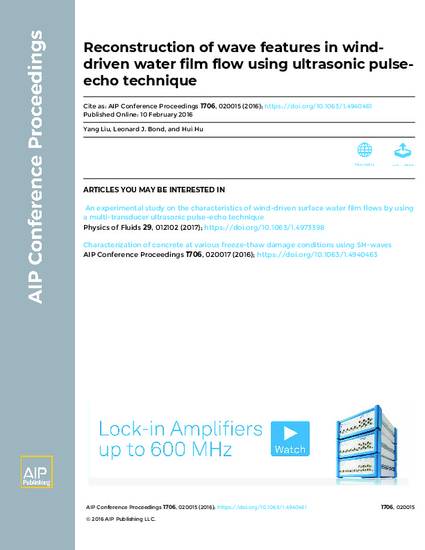
Aircraft operating in weather conditions that can cause glaze icing face the risk of performance degradation, and increased costs in de-icing procedures. The water run-back in glaze ice accretion can redistribute the impinging water mass and disturb the local flow field, and hence, affect the morphology of ice accretion. Understanding the mechanism of the surface water film transportation is important and challenging, and critical to enabling improvement in the modeling of glaze icing. In this study, an ultrasonic multi-transducer (sparse array) pulse-echo (UMTPE) technique was developed to measure thin film thickness fluctuation. The technical basis for UMTPE technique and the factors that influence the measurements are described. The UMTPE technique was configured to provide time-resolved multi-point thickness measurements. Quantitative measurements of the wind-driven water film flow are achieved by using the UMTPE technique. Point-wise thickness variations can be obtained from each individual channel in the UMTPE system. Span-wise thickness profile can be derived by interpolating the point-wise measurements. The span-wise thickness profiles can be expanded in time domain, which shows the overall flow structures. The velocity of surface wave features is derived by performing a cross-correlation of the upstream and downstream thickness variations, which is then used to transform the temporal thickness fluctuation into the spatial wave structures. The time-resolved spatial flow structures are obtained by applying the transformation along time axis, which present more details of wave structures and the evolution of wave features.
Available at: http://works.bepress.com/leonard_bond/87/

This proceeding may be downloaded for personal use only. Any other use requires prior permission of the author and AIP Publishing. This proceeding appeared in Liu, Yang, Leonard J. Bond, and Hui Hu. "Reconstruction of wave features in wind-driven water film flow using ultrasonic pulse-echo technique." AIP Conference Proceedings 1706, no. 1 (2016): 020015. DOI: 10.1063/1.4940461. Posted with permission.